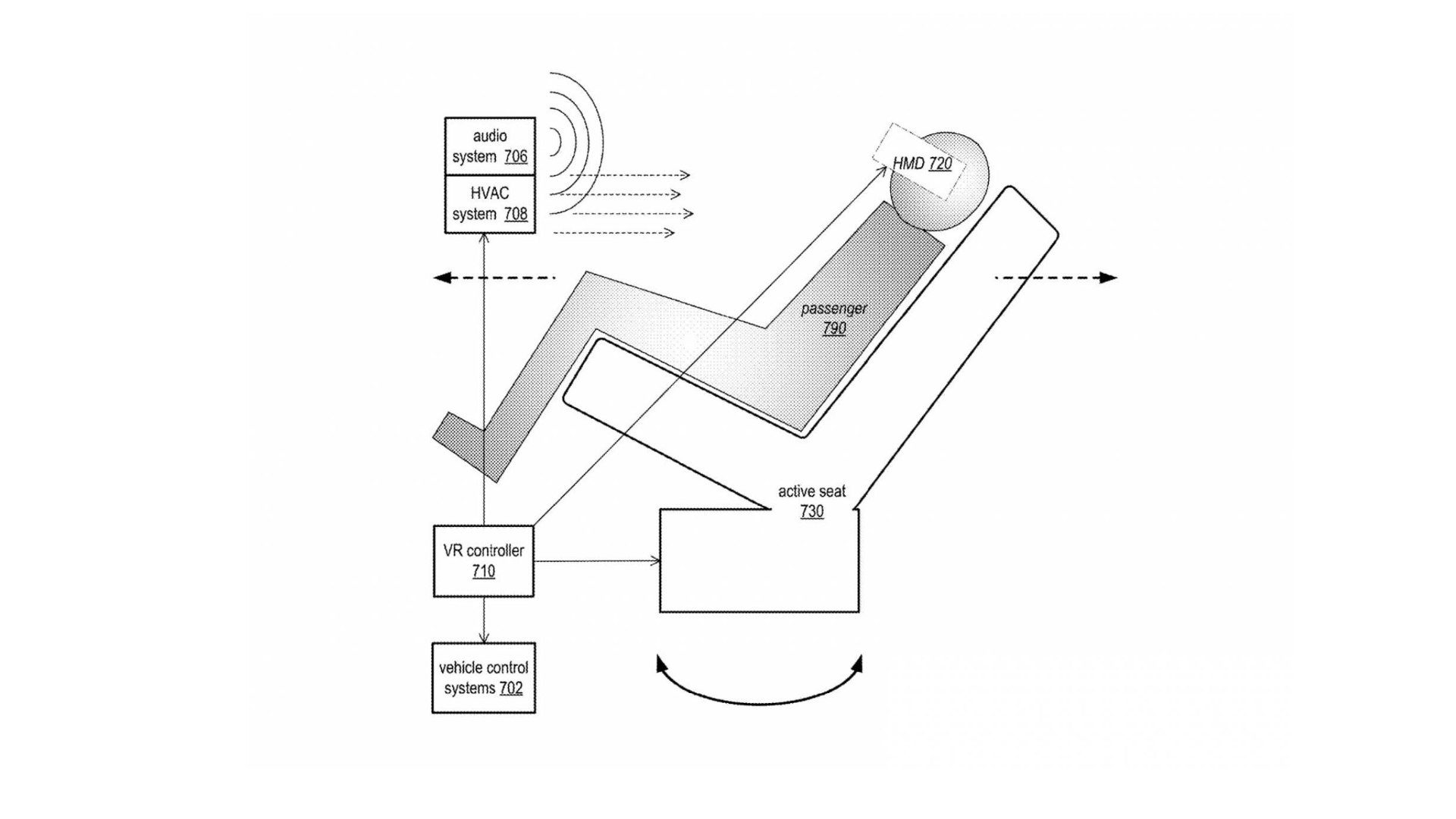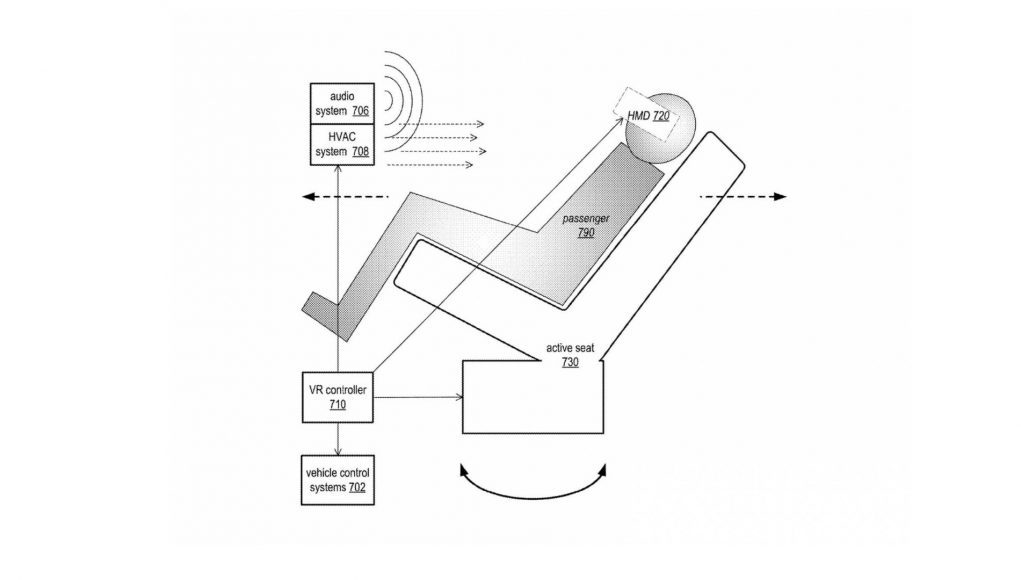When you’re driving a car, you’re invested with a sense of purpose: stay alert, don’t crash, optimize your route for the fastest and most comfortable experience. But what about when self-driving cars become the norm, and we’re no longer involved in those tasks? You’ll probably want to catch up on work, or play a game to fight the inevitable boredom—two things Apple thinks will be done in VR in the near future.
A recently published patent from Apple delves into this all-too-likely future, and theorizes that VR will be used to not only fight boredom in the car, but also mitigate motion sickness by completely supplanting screens such as laptops and smartphones and actively compensating for motion-related sickness.
Motion sickness is typically caused by the disconnect between what a user sees and what they feel, something early VR enthusiasts know all too well. Many game design techniques can be employed to create exceedingly comfortable VR experiences, such as rendering cockpits, and using similar FOV filters to limit the sensation of movement in your peripheral view, although this is the first time we’ve heard these tried-and-true concepts being used outside the realm of objectively fun things like VR-enabled roller coasters and purpose-built motion simulators.

The patent outlines a VR headset system that’s ties into the active controls of a self-driving car that could “provide virtual views that match visual cues with the physical motions that a passenger experiences,” and be “altered to accommodate a passenger upon determining that the passenger is prone to or is exhibiting signs of motion sickness.”
For users looking to catch up on work, the patent puts forward a pretty ingenious idea: while wearing a VR headset, a stabilized virtual screen could provide a solid anchor point, totally doing away with many people’s discomfort of focusing on a screen such as a laptop or smartphone, which are well-known for causing nausea after prolonged periods. Stabilizing the screen could be done by feeding data from the car’s sensors, control system, and external sources to the headset system, and visually counteracting outside forces on the user’s visual field.

For users looking for a more playful distraction, the patent also outlines a system that, instead of counteracting the forces that cause motion sickness, uses them to the passenger’s advantage. Replacing the outside world with another, more engaging environment with objectives, you could feel like you’re driving across a the ruins of an apocalypse, fending off a horde of brain-eating zombies, or touring the streets of an ancient city on your 45 minute ride to the office.

The patent even explores the idea of serving up virtual content according to how susceptible you are to motion sickness, giving you more virtual, stabilized anchor points and a horizon to help ward off motion-related nausea.
So while many are still pondering what VR’s ‘killer app’ could be—the reason to buy a headset if only for the one, super useful app—it may be we need look no further than our self-driving future yet to come.







